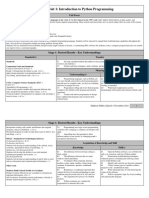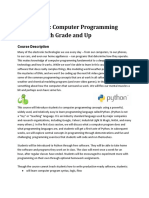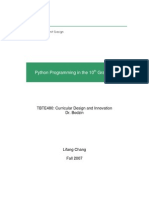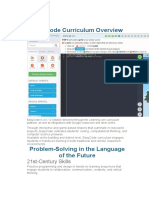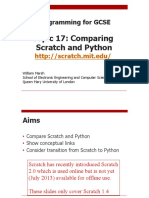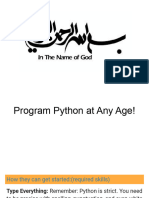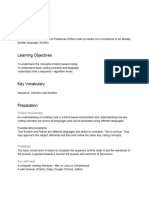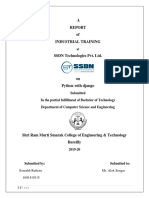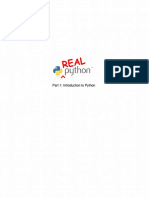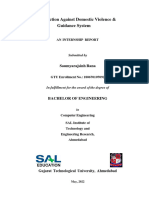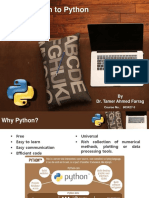0% found this document useful (0 votes)
11 views2 pagesGrade 10 Computer Skills Program
This program equips Grade 10 students with essential tech skills in graphic design and programming through modules on Canva, Scratch, and Python. Students will engage in hands-on projects to develop creativity, problem-solving abilities, and a foundation for future technology studies or careers. Assessment includes project-based evaluations, quizzes, and a final project integrating skills from all modules.
Uploaded by
yleonahlargo13Copyright
© © All Rights Reserved
We take content rights seriously. If you suspect this is your content, claim it here.
Available Formats
Download as DOCX, PDF, TXT or read online on Scribd
0% found this document useful (0 votes)
11 views2 pagesGrade 10 Computer Skills Program
This program equips Grade 10 students with essential tech skills in graphic design and programming through modules on Canva, Scratch, and Python. Students will engage in hands-on projects to develop creativity, problem-solving abilities, and a foundation for future technology studies or careers. Assessment includes project-based evaluations, quizzes, and a final project integrating skills from all modules.
Uploaded by
yleonahlargo13Copyright
© © All Rights Reserved
We take content rights seriously. If you suspect this is your content, claim it here.
Available Formats
Download as DOCX, PDF, TXT or read online on Scribd
/ 2


